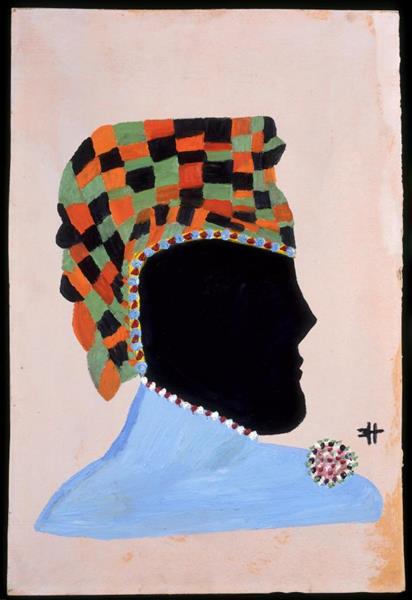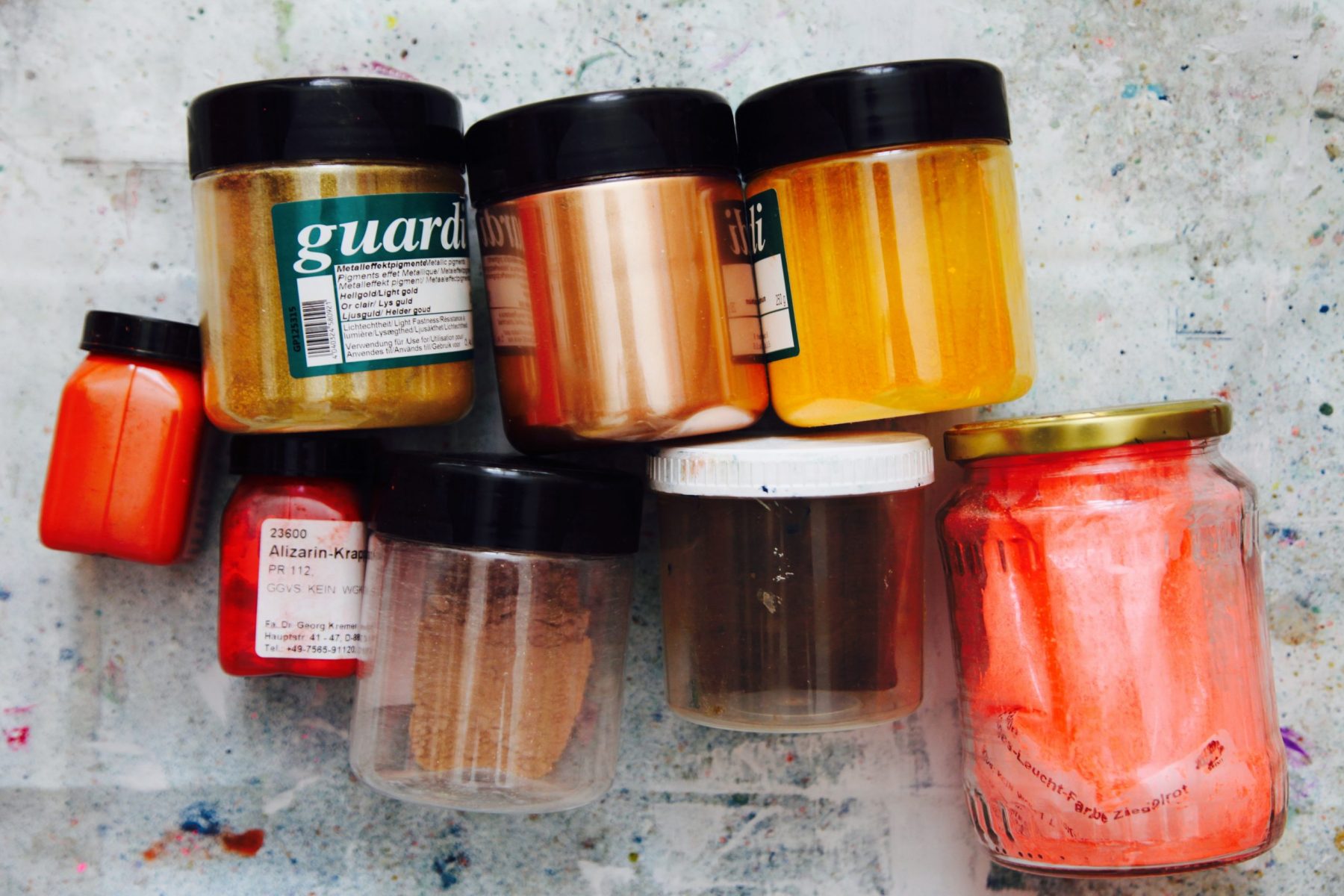I finally wrote this blog post, which I intended to do for a long time and which discussions with my former mentor Ina Blümel and my fellow fellow Rebecca Kahn in the Open Science Fellows Program inspired me to do. This is about free digital image databases for art. Below you will find a list of various databases offering free access to visual art.

The increasing digitization fosters museums, galleries, archives and other scientific institutions to make their image material freely accessible. Collaborative initiatives such as Glam Wiki and Open Glam contribute a lot to this. Some databases are only intended for viewing. However, many offer images for free use under Creative Commons licenses for teaching, research and other non-commercial purposes. Some databases have application programming interfaces (API), which making it even easier to use the image material. This has enormous potential, for example for my empirical studies on picture analysis, but also for my lectures.
europeana
Europeana collaborates with thousands of European archives, libraries and museums and understands our cultural heritage as a common good for the enjoyment of art, education and research. Europeana Collections offers access to more than 50 million objects in digitized form – books, music, artworks and more. The collections include art, photography, archeology, fashion, maps, natural history and more. Search and filter options facilitate the search. Among other things, you can filter for license-free images, of which the database offers a large number.
wikiart
WikiArt‘s main goal is to make art accessible to everyone everywhere. WikiArt already offers around 250,000 works of art by 3,000 artists. These are located in museums, universities and other institutions in more than 100 countries. The majority of them are not public, but can be viewed digitally. WikiArt is a non-profit project that everyone can contribute to. According to the wiki principle, images and content can be added and edited. For example, you can also put your own art / collection online. I also like, that aspects such as the lack of representation of women in art are taken into account with categories such as female artists. This should be extended to FLINT* people. Unfortunately, depending on the research question, the images might not be sufficiently representative for image samples in empirical studies. But that should change over time.
wikimedia commons
Wikimedia Commons is a digital collection of currently 60,929,454 media files. This includes images, sounds and films. In contrast to WikiArt, the focus here is less on art. The search can be limited to relevant hits using various filters such as media type, category, location, time etc. All images are under Creative Commons licenses and may be used freely (under conditions). According to the wiki principle, Wikimedia Commons is also non-profit and can be edited by everyone.
prometheus
Prometheus is a distributed digital image archive based at the Art History Institute of the University of Cologne. Prometheus currently connects 103 institute, research and museum databases with one interface. Currently there are 2,665,601 digitized images from art, culture and history for research and teaching. The image material can be freely used for non-commercial purposes such as teaching and research. Other provisions may apply for use in publications. The use of prometheus is not completely free of charge. To gain access to the archive, an annual license must be purchased. The 30 euro per person – there are special rates for schools, universities and museums – are used for maintaining of the project. In one of my recent studies on contemporary art, I collected my image sample from prometheus. In my experience, the search function can be used for systematic research, although it is less than optimal. This also has to do with the fact that the image material comes from different institutions and is thus tagged according to different systematics and equipped with metadata of different dimensions.
smithsonian
The Smithsonian is based in Washington D.C. Including 19 museums and the National Zoo, according to them it is the world’s largest museum, education and research complex. In addition to preserving cultural heritage and gaining new knowledge, its mandate is to make collections freely available and to support researchers and learners of all kinds. Digital resources include online events, exhibitions, podcasts, collections, animal webcams, etc. The search engine offers the categories art/design, history/culture and science/nature. A lot of the material is available under Creative Commons licenses.
web gallery of art
The Web Gallery of Art is both, a virtual museum and a database of European visual art from the 3rd to 19th century. Originally with a focus on Renaissance, the collection was expanded and now also contains images from early Christian and pre-Romanesque periods as well as from the Middle Ages, Baroque, Rococo and Mannerism. In addition to visual arts, decorative art and architecture are also represented. It is a private, non-profit initiative that, according to own statements, is aimed primarily at students and teachers. Altthough if it is not a scientific collection and the web design looks a bit like the early 2000s, the Web Gallery of Art offers a searchable database with a search mask. It is supplemented by a glossary including explanation of art terms amongst other things.
ticc printmaking dataset
The TICC printmaking dataset (van Noord & Postma, 2017) consists of 58,630 digital photographic reproductions of artworks by 210 artists and was compiled from the online collection of the Rijksmuseum, the Dutch state museum. Each of the 210 artists is represented with at least 96 artworks. All images are public domain. The data set can be downloaded completely and with citation used for example as an image sample for empirical studies.
the met
The Metropolitan Museum of Art (short: the Met) is the largest art museum in the USA and, according to its own statement, has one of the most important art history collections in the world. It also makes these collections digitally available. The extensive filter options allow a targeted search for material, geographical location, time and department. They also offer the option of searching for freely available images under Open Access.
rijksmuseum
The Rijksmuseum Amsterdam, State Museum of the Netherlands, also digitally displays its collections on Rijksstudio. This currently includes 676,691 works, including prominent ones such as Vermeer’s Milkmaid or Rembrandt’s Night Watch. In addition to the simple keyword search, there is an advanced search function and the possibility to search the research library for literature. Individual images can be downloaded directly. The Rijksmuseum itself encourages creative use of pictures, e.g. choosing your favorite image section, using images as a design for everyday objects or ordering them as a poster.
unsplash
Unsplash is not a scientific or art historical image database and therefore somewhat falls out of line here. Nevertheless, I list it here because of the contemporary, quite artistic photographs, that can be found here. Unsplash offers over a million license-free, high-resolution images by great photographers around the world, who provide their images for free. Here you can also actively contribute by uploading your own photographs and making them freely available. The keyword search is not as precise as in other databases, but it serves its purpose. I use Unsplash regularly to visualize my content in lecture slides.
open art images
After reading this post a reader of my blog pointed out another free image database. So I’m adding it here as well: Open art images (OAI) is a search and visualization engine for high-resolution images of artworks – from all around the world and from every period in history – that belong to the public domain or to a type of Creative Commons license which allows their reuse. All images come with detailed information, relevant to the understanding of their historical and cultural context and which informs the user about their current location, source and license.
image rights
In any case, before using image material check, if it is freely available for the intended use and you do not not violate any copyright by using it. I always quote author and source, if only for reasons of fairness and science. You can find a overview of various licenses, what they allow you to do and what CC BY, CC BY-SA, CC BY-ND, CC BY-NC, CC BY-NC-SA and CC BY-NC-ND mean on Creative Commons.
For those who only want to look at art without a further use, there is currently a large number of museums that digitally display their exhibitions and collections, e.g. the Tate. Maybe more about that in one of my next blog posts.
gender, diversity and post-colonialism
It remains to be critically noted, that all of the image databases mentioned above are based in Euro-American regions and mostly contain white, western art. Works from other contexts than that often come from ethnological collections, that originate from post-/colonial positions and should therefore be viewed with caution. Unfortunately, this distortion in terms of gender and diversity still reflects the current art world (Fraiberger, Sinatra, Resch, Riedl, & Barabási, 2018), in which white cis men are still disproportionately represented. A critical examination of postcolonial perspectives, paternalistic structures and Eurocentrism (Mosquera, 1992), which has reached the museum landscape in recent years, should also find its way into databases and research.
Do you know of other free digital image databases for art? Do you know image databases from other cultures or representing more diversity? Share your knowledge and add these collections in the comments.
- Fraiberger, S. P., Sinatra, R., Resch, M., Riedl, C., & Barabási, A.-L. (2018). Quantifying reputation and success in art. Science, 825–829. doi: 10.1126/science.aau7224
- Mosquera, G. (1992). The Marco Polo syndrome: Some problems around art and eurocentrism. Third Text, 35–41. doi: 10.1080/09528829208576382
- van Noord, N., & Postma, E. (2017). Learning scale-variant and scale-invariant features for deep image classification. Pattern Recognition, 583–592. doi: 10.1016/j.patcog.2016.06.005
